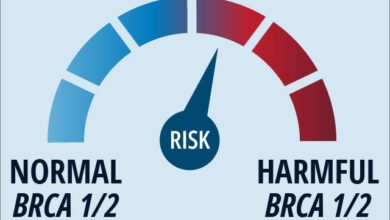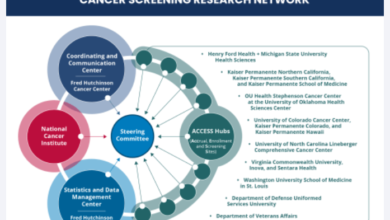Cancer Research UK – Science blog

As we get ready for the upcoming CRUK–ARR Radiation Research Conference, Professor Silvia Formenti whets our appetite for all things radiotherapy. She tells us what excites her about the future of the field and why support for research is so important…
Silvia is Chairman of the Department of Radiation Oncology, and Associate Director at the Meyer Cancer Institute, Weill Cornell Medicine. She is also Radiation Oncologist in Chief at New York Presbyterian Hospital, as well as being the Sandra and Edward Meyer Professor of Cancer Research. She is speaking at the upcoming CRUK–ARR Radiation Research Conference.
Table of Contents
The view of radiotherapy as just a cytotoxic tool has moved on quite a lot in the last few decades… how do you think of it now in terms of what it can potentially achieve?
Radiotherapy remains a powerful cytotoxic tool, but its role has evolved as our understanding of cancer progresses.
We now all accept the central role of the immune system in cancer incidence and progression. Consistent cell exposure to ionising radiation, whether at lethal or sublethal doses, is associated with the recruitment of signalling networks from both irradiated tumour and normal tissues that communicate to the host’s innate and adaptive immune system.
Immunotherapy is considered something of a revolutionary approach to cancer treatment – but your work provides powerful evidence that a combinatorial approach with both immune and radiotherapy is the way to go for some tumours. Tell us about that.
The fact that tumours need to evade the host’s immune system to prevail, grow and avoid detection isn’t that revolutionary. What has changed in oncology is that, at least in some cancers, therapeutic success requires both cytotoxic therapy as well as the active cooperation of an immune response.
The introduction of strategies to inhibit immune checkpoints in combination with standard therapies has changed oncology practice: in multiple pre-clinical models and in clinical settings it is becoming clear that it isn’t sufficient to cyto-reduce the detectable cancer. Long term remissions require correcting the multiple immune suppressive mechanisms that have enabled and sustained cancer: in melanoma, even in metastatic patients the current immunotherapies have been successful.
“We are at the beginning of studying this novel application of ionising radiation and already have learned that we will need to change some rules of standard radiotherapy.”
Radiation is an optimal partner with immunotherapy, since it has been demonstrated to generate a form of viral mimicry. As in an acute viral infection, radiation damage to nucleic acids generates DNA species from the nucleus and the mitochondria that fuel cGAS/STING signaling for interferon production, a powerful recruiter of cross-presenting cells. At the same time, in response to radiation induced DNA-damage, multiple survival and repair pathways are elicited, through transcription and translation of potentially mutated genes, availing neoantigens for an adaptive immune response.
These effects are mitigated by immunosuppressive effects of radiation, like a powerful activation of adenosine or TGFbeta. We are at the beginning of studying this novel application of ionising radiation and already have learned that we will need to change some rules of standard radiotherapy, for instance by excluding draining nodes when radiation is combined with immunotherapy.
The abscopal effect is a fascinating phenomenon – does the radiation community think of it as a curiosity or is it gaining an air of legitimacy as a clinical tool?
The abscopal effect got much more attention than needed: we focused on it because it was an original indication of the recruitment of an immune response. It remains a proof of principle of the systemic effects of localized therapy and a way to monitor successful immunization.
Radiotherapy is of course a crucial treatment modality – but because it is so established, is there a danger that research into the field could struggle to find support?
Absolutely: much of cancer research focuses on identifying targets for drug development, often with industry collaboration. For example, historically the pharmaceutical industry has been much less interested in collaboration with radiation biologists and radiation oncologists.
This is why competitive, peer reviewed access to philanthropy is so important. CRUK has played a crucial role with RADNET, a critical initiative that I hope can be sustained.
It’s a very technology driven field in many ways – what gets you excited in terms of the next breakthroughs?
I am very much interested in exploring how different forms of radiation (different dose rate, fractionation, sources etc) generate physical damage, and their distinct biological consequences on cancer and normal tissue, including the host’s immune system.
The crosstalk between physics and biochemistry renders our discipline unique. There is still so much to uncover, and radiation biology needs an infusion of resources to motivate young scientists to focus on studying the field.
Register for the CRUK–ARR Radiation Research Conference 2023 here
Source link
#Cancer #Research #Science #blog


